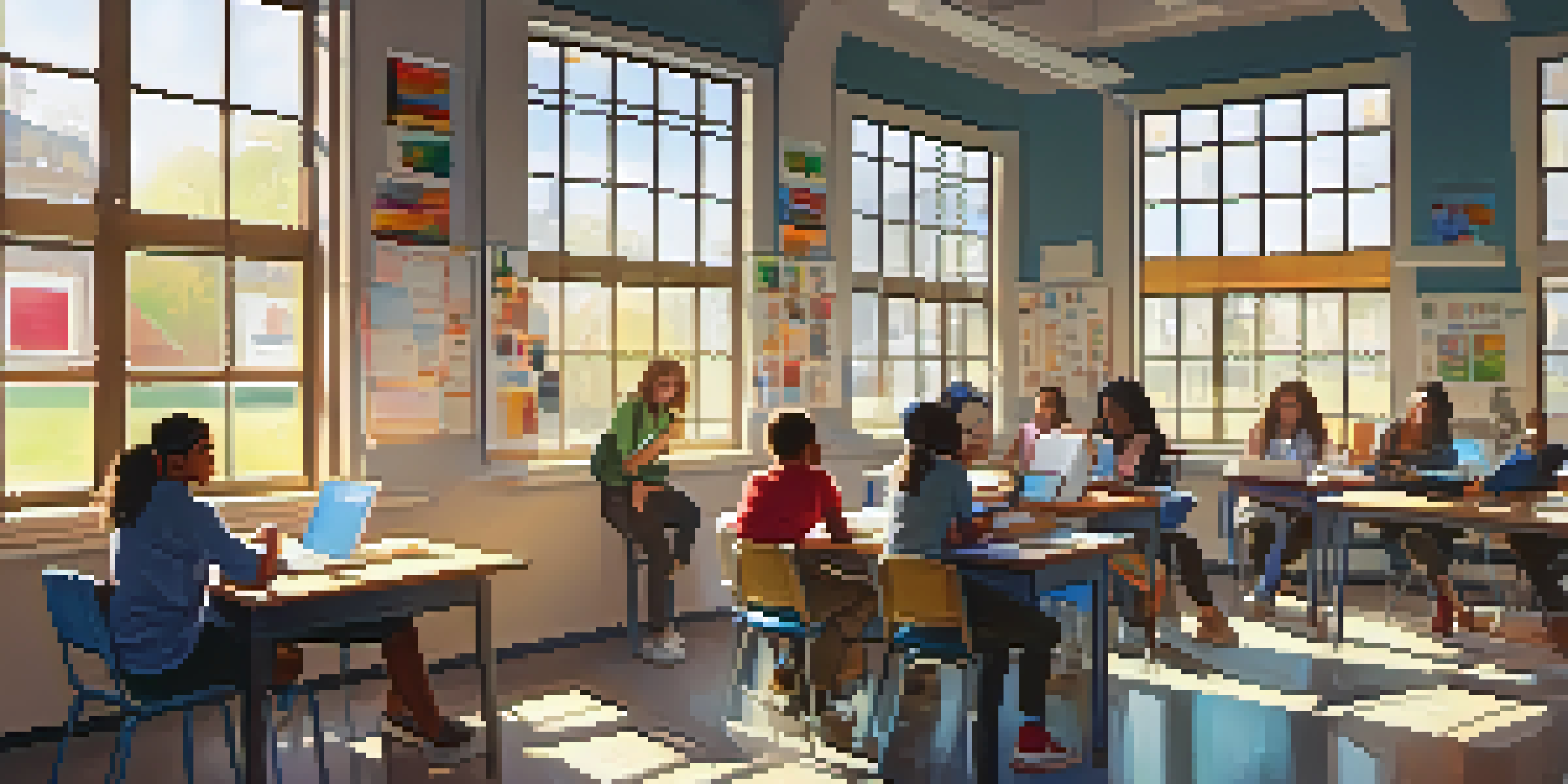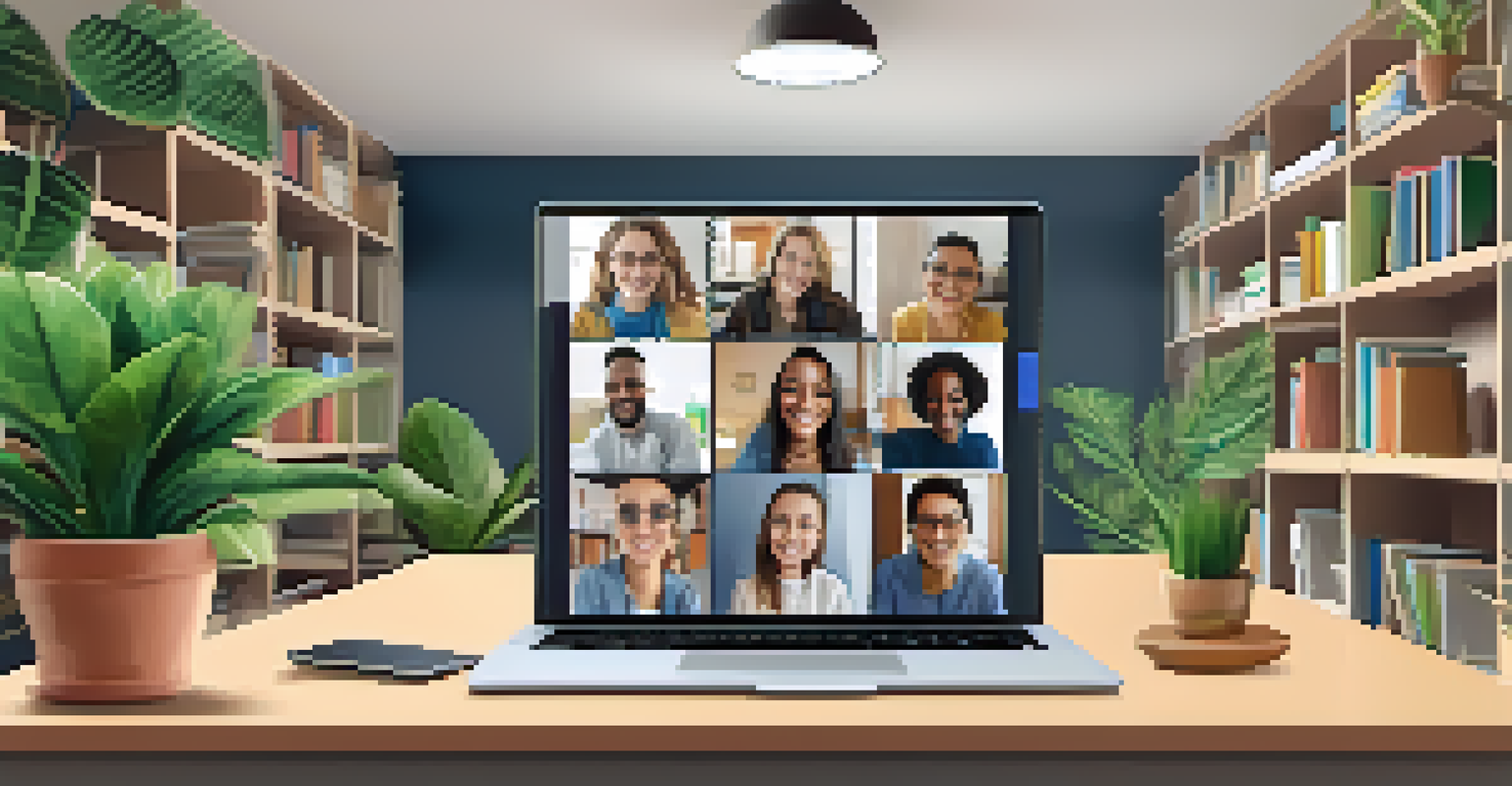The Future of Collaborative Learning in a Post-Pandemic World

Understanding Collaborative Learning Post-Pandemic
Collaborative learning has undergone significant changes since the pandemic. With remote learning becoming the norm, educators and students alike have had to adapt to new methods of engagement. This shift has not only challenged traditional teaching practices but also opened the door to innovative approaches in learning.
Collaboration allows us to know more than we are capable of knowing by ourselves.
In this new landscape, collaboration transcends physical classrooms, allowing diverse groups to connect from anywhere in the world. For instance, students can now work together on projects through various digital platforms, breaking down geographical barriers. This evolution emphasizes the importance of inclusivity and accessibility in educational practices.
As we move forward, understanding the dynamics of collaborative learning in this post-pandemic era is crucial. It helps educators design effective strategies that harness technology while also recognizing the value of face-to-face interactions. This balanced approach could redefine how we perceive learning in the years to come.
The Role of Technology in Collaborative Learning
Technology has played a pivotal role in reshaping collaborative learning. Tools like Zoom, Google Workspace, and Microsoft Teams have become essential for fostering teamwork among students. These platforms facilitate real-time communication and collaboration, making it easier for learners to share ideas and resources.

Moreover, educational technologies are continuously evolving, offering new features that enhance the learning experience. For example, virtual whiteboards and breakout rooms allow for more interactive sessions, encouraging creativity and problem-solving. This tech-driven approach not only keeps learners engaged but also prepares them for a digitally-oriented workforce.
Collaboration Transcends Classrooms
Post-pandemic, collaborative learning has evolved to utilize digital platforms, enabling diverse student groups to connect and work together regardless of location.
However, it’s important to recognize that technology should supplement, not replace, personal interactions. Effective collaborative learning still thrives on human connections, and balancing digital tools with in-person experiences can create a more holistic learning environment.
Emphasizing Social Emotional Learning in Collaboration
The pandemic has highlighted the significance of social emotional learning (SEL) in education. As students navigate their emotional landscapes, fostering collaboration can help build resilience and empathy. Engaging in group activities encourages students to understand and support each other's feelings, fostering a supportive learning community.
The greatest danger in times of turbulence is not the turbulence; it is to act with yesterday's logic.
For instance, group discussions about shared experiences during the pandemic can create a sense of belonging among learners. These discussions not only enhance collaboration but also provide a platform for students to voice their concerns and feelings. This emotional connection can significantly enhance the collaborative learning experience.
In a post-pandemic world, integrating SEL into collaborative learning is essential. By prioritizing emotional well-being, educators can create environments where students feel safe to express themselves and work together effectively.
Redefining Assessment in Collaborative Learning
Assessment methods are evolving as collaborative learning gains traction. Traditional assessments often focus on individual performance, but group projects and peer evaluations encourage collective accountability. This shift necessitates new assessment strategies that capture the nuances of collaboration.
For example, educators might implement reflective journals or peer feedback sessions to gauge group dynamics. These methods not only assess individual contributions but also evaluate how well students work together. This holistic approach fosters a deeper understanding of collaboration and its impact on learning outcomes.
Technology Enhances Learning
Tools like Zoom and Google Workspace are essential for fostering teamwork, providing real-time communication that enhances the collaborative experience.
Redefining assessment in this context allows for a more comprehensive view of student progress. It encourages learners to develop interpersonal skills, critical thinking, and problem-solving abilities that are essential in today’s world.
The Importance of Inclusivity in Collaborative Learning
Inclusivity is a cornerstone of effective collaborative learning. In a diverse classroom, students bring unique perspectives that enrich discussions and problem-solving. Embracing this diversity is crucial for creating an environment where everyone feels valued and heard.
Educators can promote inclusivity by designing group activities that encourage participation from all students. For instance, assigning roles based on individual strengths can help ensure that everyone contributes meaningfully. This approach not only enhances collaboration but also empowers students to take ownership of their learning.
As we look to the future, prioritizing inclusivity in collaborative learning will be essential. It fosters a sense of belonging and respect, allowing students to thrive both academically and socially.
The Future of Hybrid Learning Environments
The rise of hybrid learning models is reshaping the landscape of collaboration. As schools and universities blend in-person and online instruction, students must navigate both environments effectively. This hybrid approach offers flexibility but also requires new strategies for collaboration.
For example, teachers can create assignments that allow students to collaborate both in-person and online. This might involve brainstorming sessions in the classroom followed by digital collaboration on projects. Such integration helps students develop adaptability, a key skill for the modern world.
Inclusivity is Key to Success
Prioritizing inclusivity in collaborative learning ensures that all students feel valued, enriching discussions and promoting a supportive environment.
Looking ahead, hybrid learning environments will likely become the norm. Embracing this future means recognizing that effective collaboration can happen in various formats, enhancing the overall learning experience.
Building Lifelong Learning Through Collaboration
Collaboration fosters a culture of lifelong learning, an essential trait in our rapidly changing world. When students engage in collaborative projects, they not only learn subject matter but also develop skills like teamwork, communication, and critical thinking. These skills are invaluable as they transition into their careers.
For instance, working with peers on a project can mirror real-world scenarios where collaboration is crucial. This experience prepares students for future workplaces, emphasizing the importance of adaptability and cooperation. As a result, they emerge as more competent and confident individuals.

Ultimately, the future of collaborative learning is intertwined with fostering lifelong learners. By emphasizing collaboration in educational settings, we equip students with the tools they need to thrive in an ever-evolving landscape.
The Path Forward: Embracing Change in Education
As we navigate the future of education, embracing change is vital. The lessons learned during the pandemic have reshaped our understanding of learning and collaboration. Moving forward, educators must be willing to adapt to new teaching methods and technologies that enhance collaborative learning.
This means investing in professional development for teachers, ensuring they are equipped to lead in this new landscape. By fostering a culture of continuous improvement, schools can create environments that support both educators and students in their collaborative journeys.
In conclusion, the future of collaborative learning in a post-pandemic world holds immense potential. By embracing change, prioritizing inclusivity, and leveraging technology, we can create enriching learning experiences that prepare students for success in all aspects of life.